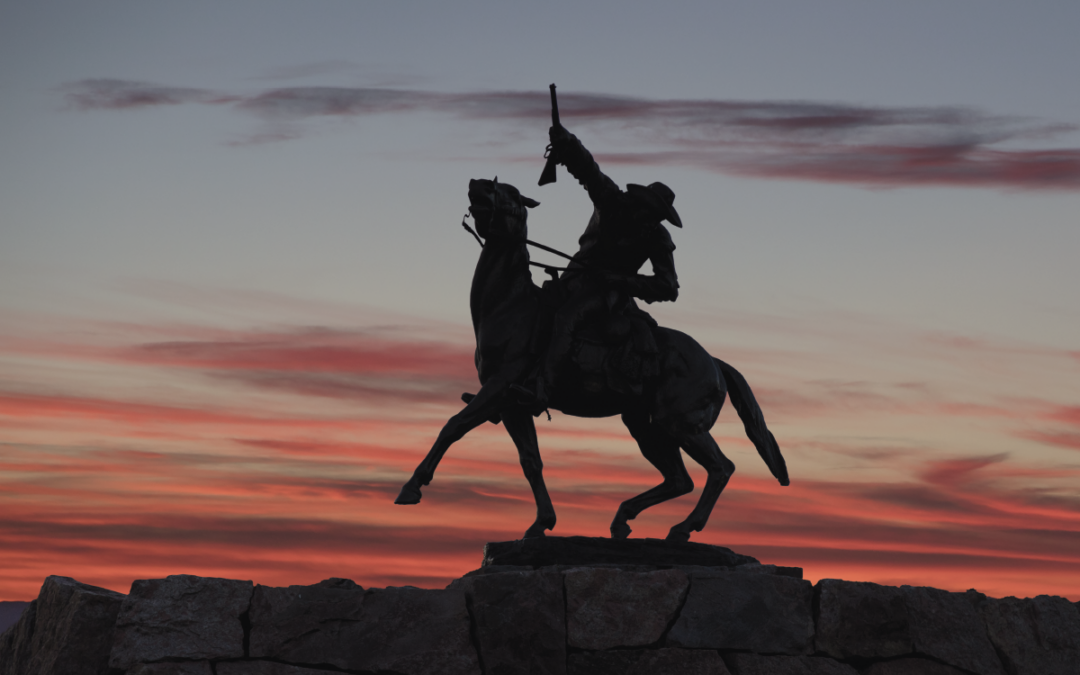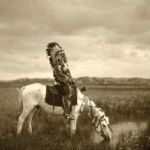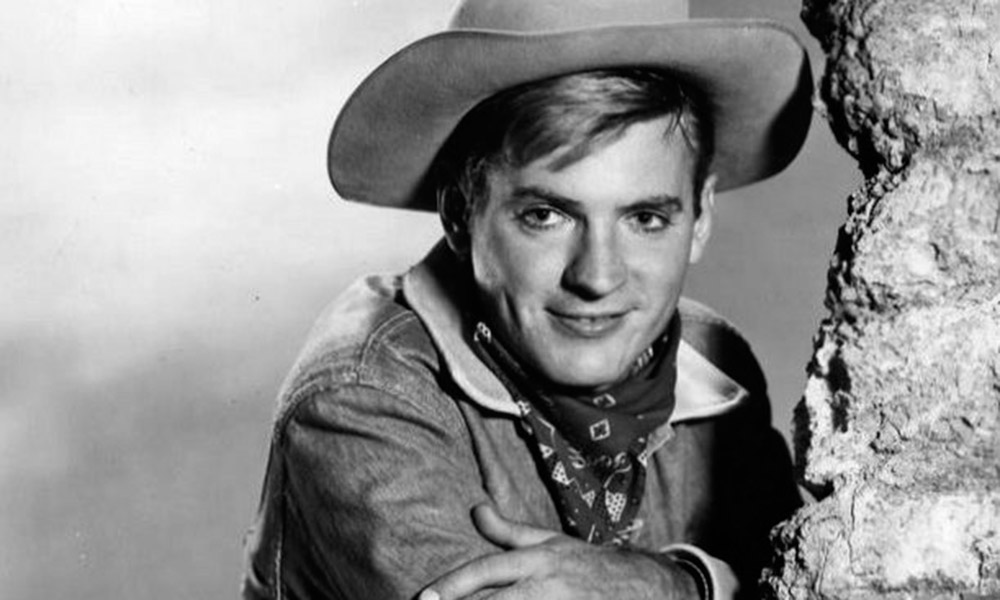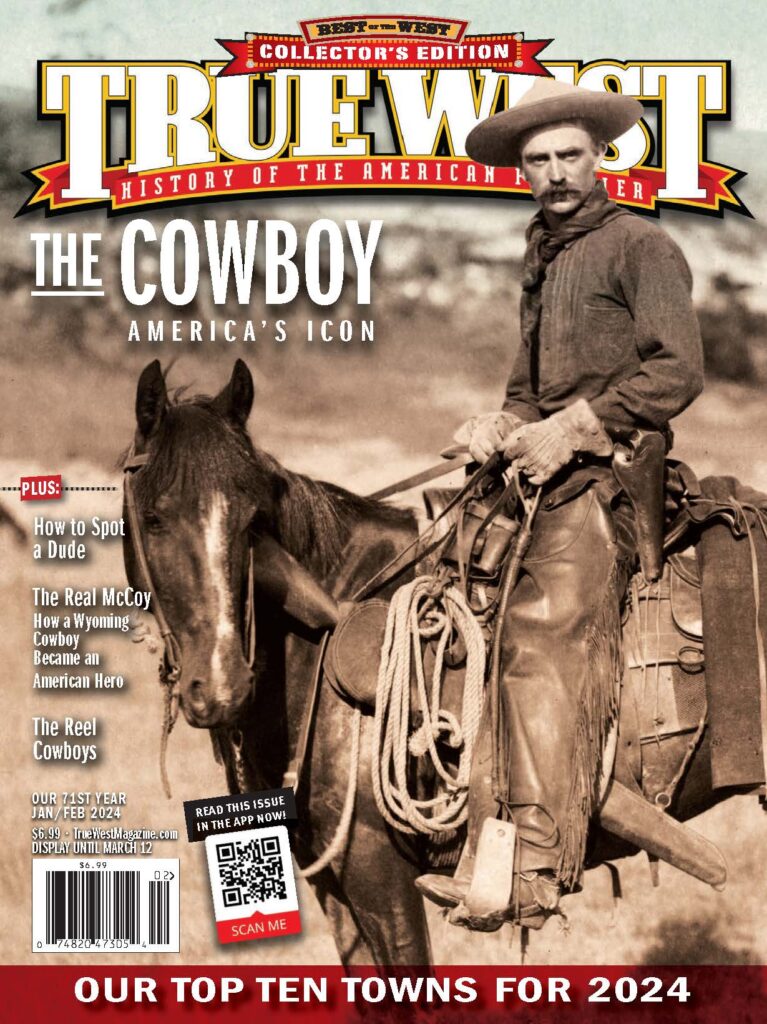Time to Motor West
Enjoy welcoming Western hospitality when you stay and explore the region’s best towns.
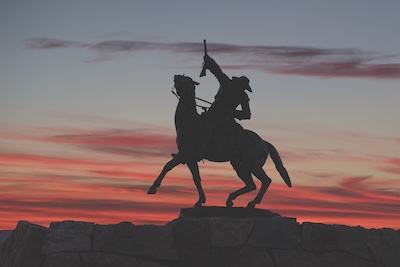
Courtesy Carol Highsmith Archives, Library of Congress
Whether you grew up in a small town or a big city, in the American West or overseas, there is no better way to discover the true meaning of hospitality than a week-long stay in one of America’s best Western towns.
True West’s 2024 Top Ten Towns celebrates the best communities of the West—and the men and women who work year round to preserve, promote and celebrate their Western history and heritage. Our favorite Western communities offer historic sites and museums, and fully restored century-old (or more) hotels, restaurants and saloons—perfect places to make your headquarters during an extended holiday exploring the town and the surrounding region.
The editors of True West invite you to pack your bags and motor West to stay and immerse yourself in the unique heritage and history of the best Western towns. But watch out, you might just discover yourself planning to come back next year—or even buying a second home and making it more permanent than just a one-time adventure out West.
1: Cody, Wyoming
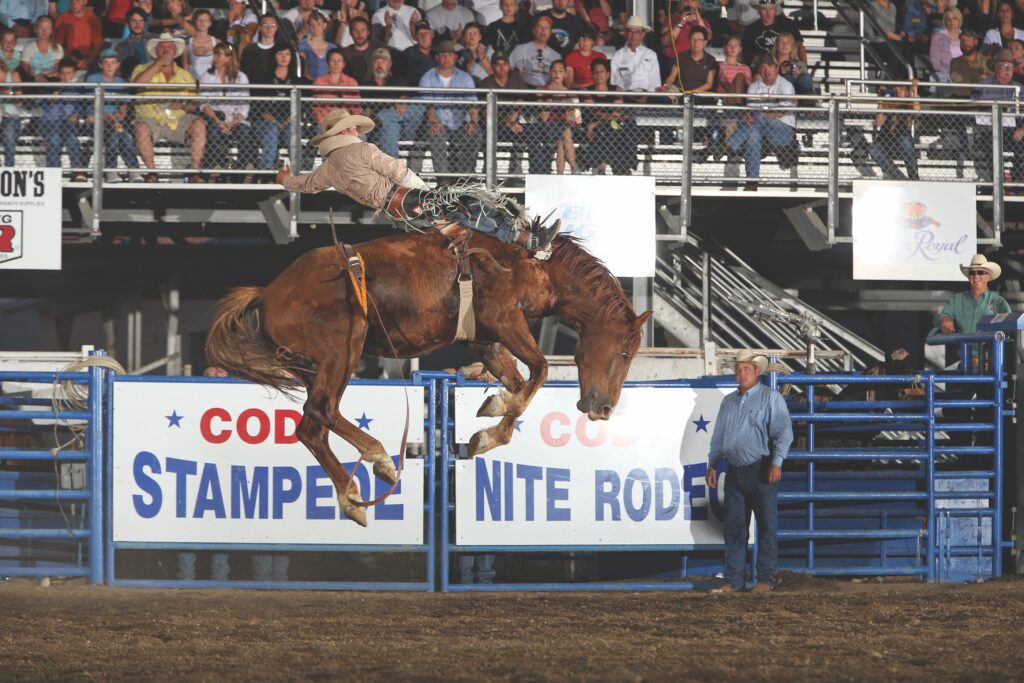
From near and far, across the
United States and around the world, Cody, Wyoming, is synonymous with the West.
William F. “Buffalo Bill” Cody lent his name to the town, which was founded as a land venture to attract the railroad near the east entrance of Yellowstone.
As a preeminent Western destination and eastern gateway to Yellowstone, Cody is a city that can be returned to year after year—in all seasons—to explore the magnificent natural wonders, historic sites and world-class museums.
From the Historic Irma Hotel founded by Buffalo Bill Cody in downtown Cody to nearby guest ranches and lodges with trail riding and fly fishing, the Wyoming city of 10,000 is the perfect place to immerse yourself in the West. Enjoy the Western atmosphere while walking the historic downtown district, which is filled with fun boutiques, coffee shops, restaurants and saloons, including the famous Victorian bar at the Irma Hotel.
The Buffalo Bill Center of the West is the most significant museum complex in the United States outside of the Smithsonian in Washington, D.C. Admission includes entrance to the center’s five museums: Buffalo Bill, Plains Indian, Cody Firearms, Draper Natural History and Whitney Western Art. The McCracken Research Library is also open to visitors, but an appointment must be made to view archival materials.
If you are a summer visitor, the 1890s Old Trail Town is open from May 15 to September 30 in 2024. The outdoor park has the largest collection of frontier structures in one place in Wyoming and includes a mountain man memorial and the gravesite of John “Liver Eatin’” Johnson.
Western art lovers flock to Cody year round, but especially in September for the Rendezvous Royale and the pres-tigious Buffalo Bill Art Show & Sale, which in 2024 will be held September 21-24.
If you think Cody is all about museums and natural wonders, think again. The Cody Stampede Rodeo and Cody Nite Rodeo make the northwestern Wyoming town one of the rodeo capitals of America. In 2024, the annual Stampede will celebrate its 105th anniversary June 30-July 4, and the 86th Night Rodeo is held every remaining summer night, June-August.
All these reasons and more are why Cody is our number one True Western Town for 2024.
codyyellowstone.org
2: Prescott, Arizona
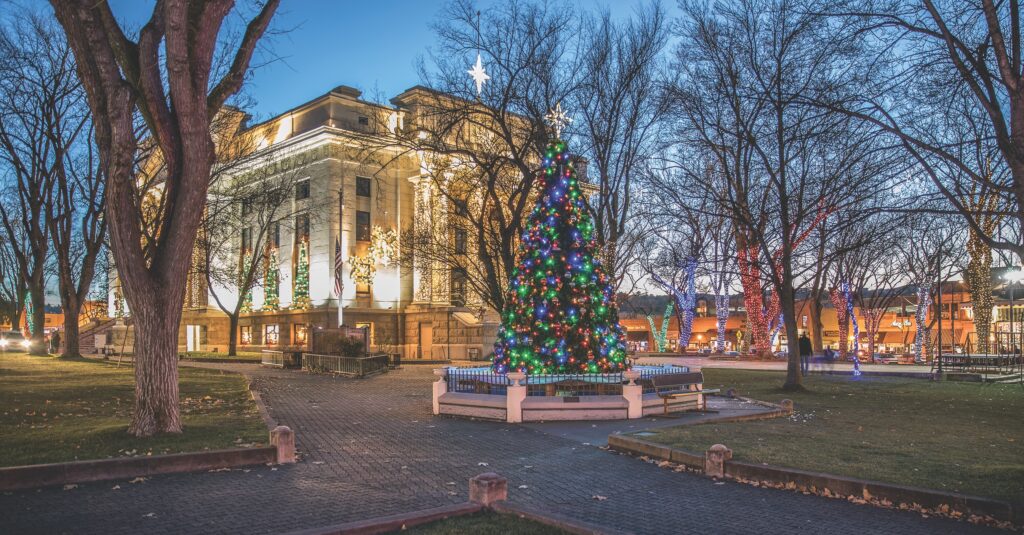
The original territorial capital of Arizona is well known as “everyone’s home-town” and has rightfully earned that nickname. The historic and picturesque mile-high town in Yavapai County is the perfect place to take a walk through the state’s history.
Start at Sharlot Hall Museum, a living history center that has one of the finest collections of territorial buildings in the state, including the Territorial Governor’s Home, the Sharlot Hall Building and Fort Misery. The Lawler Exhibit Center’s “Prehistory of the Central Highlands” provides visitors with an insightful understanding of the natural and cultural history of the area before the arrival of Europeans.
From Sharlot Hall, walk east on Gurley Street to the historic Yavapai County Courthouse Plaza and Prescott’s historic downtown district. Solon Borglum’s Rough Rider bronze, also known as the Buckey O’Neill Monument, was dedicated in 1907 and is one of the most recognized landmarks in the city and the state.
The historic district around the plaza is a mecca of antique shops, boutiques, restaurants, historic hotels and classic historic bars, including The Birdcage, Matt’s Saloon and the Palace Restaurant and Saloon. The Palace is the oldest operating bar in the state and offers up great food and entertainment in a historic, Old West museum atmosphere.
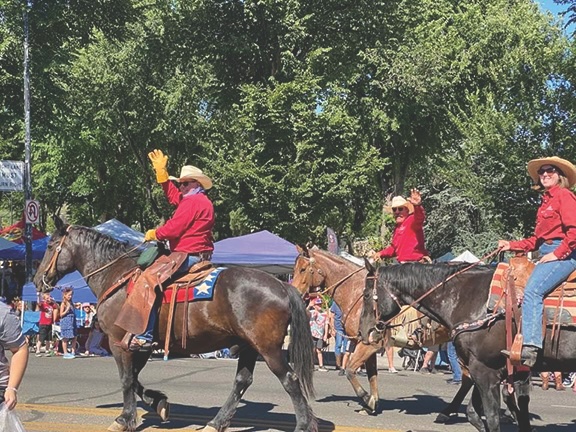
While in Prescott, schedule time to visit Prescott’s Western Heritage Center (just down the street from the Palace), the Indigenous People’s Museum and the Phippen Museum, which houses one of the finest Western art collections in the state.
Prescott hosts public festivals and parades on the plaza year round, including the popular, annual Courthouse Lighting held the first Saturday of every December.
Since 1888, the city’s biggest annual event, the World’s Oldest Rodeo, has been held every Fourth of July. In 2024, Prescott Frontier Days will celebrate its 136th anniversary with eight shows July 1-7, 2024. The annual Prescott Frontier Days Parade will be held on Saturday morning, July 6.
prescott.org
3: Fort Smith, Arkansas
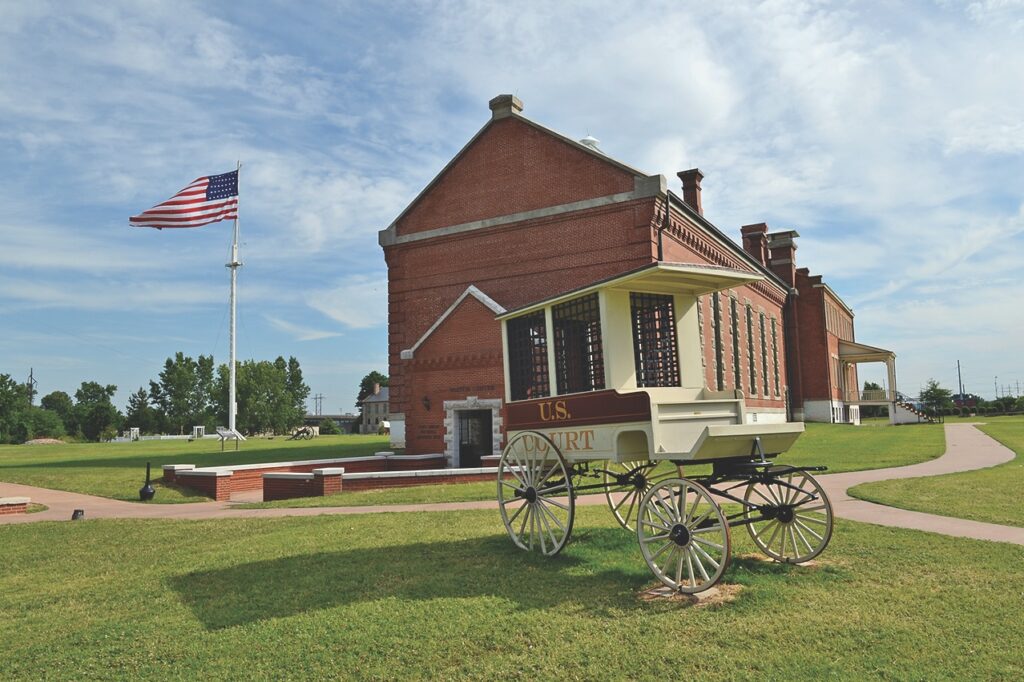
In 1817, Fort Smith was founded as an outpost of a youthful nation growing westward. Over two centuries later, Fort Smith is still a crossroads of history, but today the history can be discovered in its local and national museums.
Fort Smith was built on the bluffs of the Arkansas River and has remained an important and vital economic center for the tri-state region of Arkansas, Oklahoma and Missouri.
While Missouri’s St. Louis, Indepen-dence and St. Joseph receive more attention in the history books, Fort Smith’s role in the development and settlement of the Western territories, must be considered.
The National Park Service’s Fort Smith National Historic Site is one of the largest, best-preserved interpretive centers of a historic 19th-century federal post west of the Mississippi. Tours should begin at the visitors center in the fort’s former barracks/courthouse/prison.
Fort Smith may have been best known as the court of Judge Isaac Parker, “The Hanging Judge,” but it is also becoming famous for the service of hundreds of deputy U.S. marshals, including Bass Reeves.
Visitors can see the 37-acre grounds of Fort Smith on a 1.5-mile self-guided tour of all the key historic structures and sites, including the Trail of Tears National Historic Trail Overlook.
In the city, visitors should enjoy walking the Fort Smith Belle Grove Historic District, a 22-block area of homes dating back 130 years. Four of the homes are open to the public.
The newest museum to open in Fort Smith is the United States Marshals Museum. The state-of-the-art facility opened its doors in July 2023 and is one of the most significant historical centers to open in the country in the past five years.
fortsmith.org
4: Tombstone, Arizona
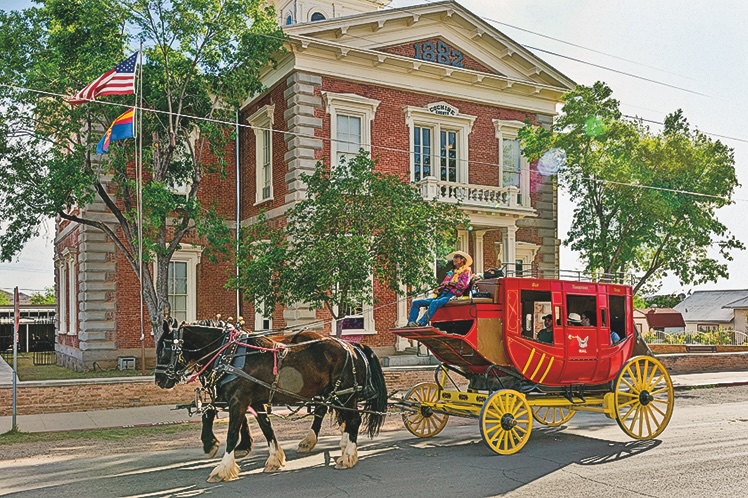
In the annals of Old West history in the United States, few towns are as iconic and internationally famous as Tombstone.
“The town too tough to die” is the Grand Canyon State’s most infamous mining camp and is known world-wide as a destination for those who want to walk the streets of the Earps and Clantons with hopes of discovering the truth about the notorious gunfight behind the O.K. Corral.
Visitors have many choices for lodging when planning a visit to the historic mining camp. Tombstone Monument Ranch is a historic working cattle ranch where guests can stay in rooms and buildings rebuilt to look like Old Tombstone in the 1880s. They can even work cattle and learn the basics of cowboying. Also popular are local motels and bed and breakfasts, including the Larian Motel, The Tombstone Grand Hotel, Trail Rider’s Inn and Virgil’s Corner Bed & Breakfast.
When booking a vacation to Tombstone consider staying at least a long weekend to visit all the local attractions. Plan a longer stay if you are attending one of the popular annual festivals which kick off every March with the Annual Tombstone Wild West Days, followed by Wyatt Earp Days in May and Doc Holli-DAYS in August. The annual Old West festivals culminate with the oldest and most prestigious, Helldorado Days, which is held the third weekend of every October.
A trip to Tombstone would not be complete without touring Big Nose Kate’s Saloon, the Crystal Palace, C.S. Fly’s, O.K. Corral, the Bird Cage Saloon, Rose Tree Museum, Good Enough Underground Mine Tour, Gunfighter Hall of Fame and The Tombstone Epitaph Museum.
tombstonechamber.com
5: San Angelo, Texas
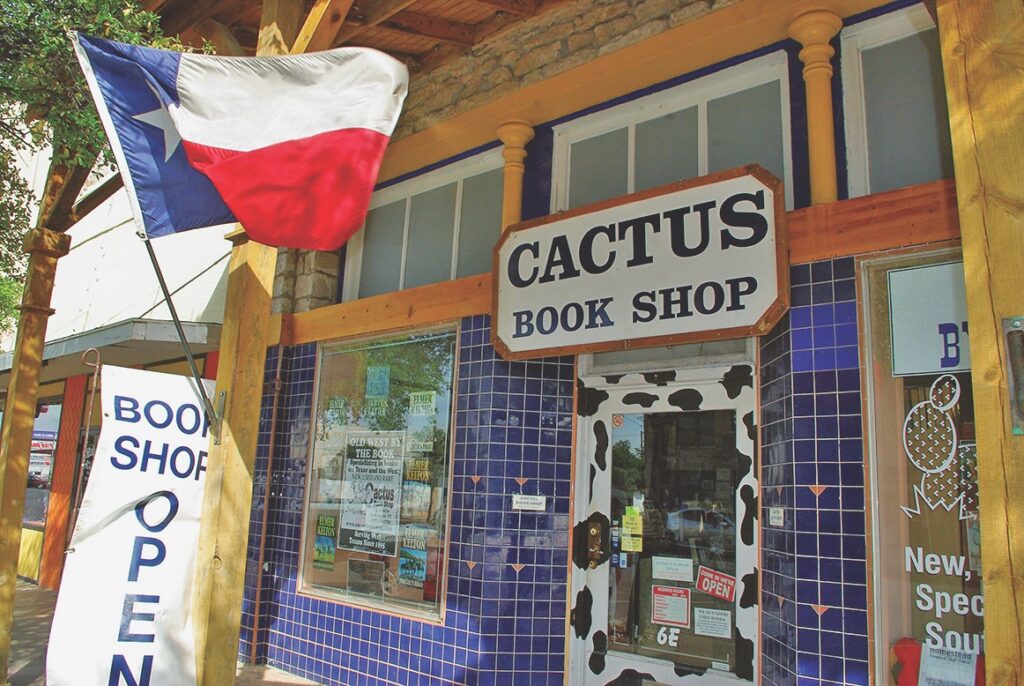
For many who travel the West, the first place they stop when they enter a new town is the local bookstore. For those who love a good bookshop—and the West—the Cactus Book Shop in San Angelo is the place to start your visit to this wonderful West Texas town, which the great Western writer Elmer Kelton called home.
The Cactus was Kelton’s favorite bookseller in the area, and if you love his books and Western reads of all kinds, then this is the place for you. Once inside its lovely confines, you are sure to discover a handful of good books on local history and maybe a couple of Kelton’s novels to enjoy during your road trip.
San Angelo was founded in 1867 adjacent to the newly constructed Fort Concho near the Concho River. The post-Civil War era was a time of expansion in West Texas, and the fort and town were strategically placed at a key frontier crossroads. Fort Concho served its purpose effectively until it was closed in 1889.
Today, San Angelo is still a vital economic center for the region’s agriculture and oil industries, with nearly 120,000 residents living in the metro area. The city is home to Angelo State University, the San Angelo Museum of Fine Arts, San Angelo State Park and San Angelo Nature Center.
The city owns and operates historic Fort Concho, an active living history center with a museum. Twenty-three buildings at the landmark have been preserved and are great examples of frontier Army architecture. Two big events held every year are Buffalo Soldier Heritage Day in February and Fort Concho Frontier Day in April.
If you didn’t know already, nothing small happens in West Texas, and the San Angelo Rodeo and Stock Show is no exception. Founded in 1932, the Stock Show in 2024 is officially February 1-18, but livestock events start on January 24 and culminate during the rodeo with the final Premium Sale on April 20. The San Angelo Rodeo at the Foster Communications Coliseum is April 5-21 with the Rodeo Parade on April 6. And if that’s not enough rodeo for you, in October, the Cinch Roping Fiesta is a popular three-day event.
discoversanangelo.com
6: Deadwood, South Dakota
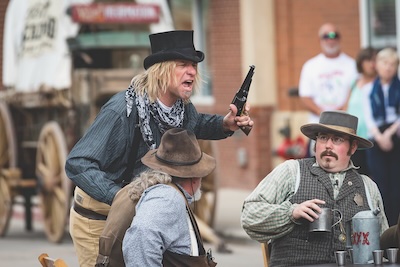
Walking down Deadwood’s Main Street is like walking back in time. On the National Register of Historic Places, the city is one of the most significant Western boomtowns in Old West history.
Deadwood earned its reputation as a Wild West town honestly. Founded in 1876 after gold was illegally discovered on the Sioux Nation, Deadwood quickly gained notoriety as a 24-hour den of iniquity with dozens of saloons, gambling halls and houses of prostitution.
Visitors to the Black Hills of South Dakota will discover quickly that a week is not enough time to enjoy all the historic sites and natural wonders of the region. Deadwood is a great place to call home while touring the Hills with easy access north and south on scenic mountain roads to Mount Rushmore National Memorial, Crazy Horse Memorial, Custer State Park and Wind Caves National Park. Hiking, fishing, off-roading and horseback riding are all fun outdoor activities available when staying in Deadwood.
The city’s boosters host a series of popular festivals every year including Wild Bill Days, June 13-15, 2024, and Days of ’76, July 21-27, 2024. The PRCA has named The Days of ’76 Rodeo the best rodeo 19 times. As they say “Best Rodeo. No Bull.”
Book a room in the historic Bullock Hotel and you will be in walking distance of all that Deadwood has to offer by day and night, including most of its museums. Stop at the visitors center at the historic train station and pick up directions to The Adams Museum, Historic Adams House, Days of ’76 Museum, The Brothel and the Homestake Adams Research and Cultural Center.
And don’t forget to visit Mt. Moriah Cemetery high above the town. The views are spectacular, the walks through the historic memorial grounds are peaceful and reflective and a stop at James Butler “Wild Bill” Hickok and Martha “Calamity Jane” Canary’s gravesites provide a gravitas to a visit to Deadwood that will not soon be forgotten.
deadwood.com
7: The Dalles, Oregon
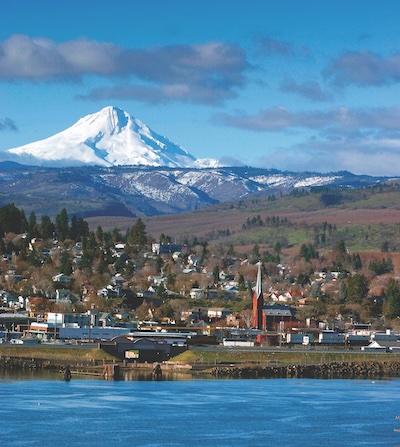
Courtesy Explore The Dalles
Originally founded as the terminus of the Oregon Trail, The Dalles has played a key role in Oregon’s history ever since.
Long before the first European explorers traveled up the Columbia River Gorge, The Dalles was a tribal fishing center and crossroads of Northwestern Native culture. With the advent of the Oregon Trail, The Dalles developed as a launching point for emigrant rafting parties down the river to the Willamette River Valley. While an alternate overland route was built over the Cascade Mountains and around Mount Hood to Oregon City, The Dalles remained an important economic and transportation hub. Today, the city is home to a little more than 16,000 residents and is a hub of activity for enthusiasts of the Columbia River Gorge National Scenic Area.
If you plan on exploring the history and natural wonders of the Columbia River Gorge region for a long weekend or more, The Dalles is a wonderful city to make your headquarters. The Dalles Main Street District downtown is home to over 100 businesses, including bakeries and coffee bistros, brew pubs and wineries, eclectic and unique shops such as Klindt’s Booksellers and National Neon Sign Museum and convenient places to stay like the Celilo Inn and The Dalles Inn.
The Columbia Gorge Discovery Center & Museum is one of the state’s most significant museums and a perfect destination where all ages can learn about Oregon and Northwest history and culture. The museum’s exhibits detail the history of the local American Indian tribes, early European and American exploration and the Oregon Trail.
Territorial and pioneer history is also on display at one of Oregon’s oldest museums, the historic Fort Dalles Museum and Anderson Homestead. While Lewis and Clark encamped at the location in 1805, the first permanent building at Fort Dalles was constructed in 1838. Today’s museum exhibits are housed in the Surgeon’s Home, which was built in 1856. The Anderson Homestead is a grand collection of Swedish pioneer farm buildings relocated and restored on the campus. A tour illuminates day-to-day family life on an Oregon homestead.
explorethedalles.com
8: Abilene, Kansas
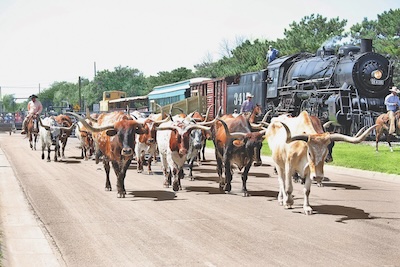
Abilene, Kansas
Courtesy Abilene, Kansas, CVB
Illinois cattle dealer Joe McCoy did not know what he was starting when in 1867 he advertised his new Abilene stockyards and Drovers Cottage in Texas newspapers, but he might as well have been launching a mini-revolution with his entrepreneurial investment in the Kansas-Pacific Railroad town.
Today, Abilene is a modern eastern Kansas city of about 6,500 residents. The Dickinson County Seat is nestled in the state’s Smoky Hills region and has been an important economic center for the region since the first cattle arrived in the town via the trails from Texas over 150 years ago.
The city was important enough that a future president’s parents settled there in 1898. Future West Point graduate and World War II Army leader Dwight D. Eisenhower spent his most formative years in Abilene, and today it is home to the Dwight D. Eisenhower Presidential Library, Museum and Boyhood Home.
Two other Old West attractions should not be missed: the Abilene and Smoky Valley Railroad and Old Abilene Town are fun for all ages and offer many enjoyable activities throughout the summer season, including Chisholm Trail Days held every Labor Day Weekend. The local Heritage Center of Dickinson County should also be toured to learn about the local history and heritage.
Downtown Abilene is great for walking and has plenty of entertainment and eating establishments for all ages and interests, including antiques and specialty store shopping.
Looking for some great photo ops? Don’t miss a photo in front of the World’s Largest Belt Buckle and the Big Spur before a ride on the C.W. Parker Carousel, the oldest of its kind still in operation.
abilenekansas.org
9: Lubbock, Texas

Lubbock, Texas
Courtesy Lubbock CVB
Famously known as “Hub City” because all roads in West Texas lead to Lubbock, the Southern Plains city is definitely the economic center for the vast region of the Lone Star State.
With Texas Tech University and a vibrant downtown working in tandem to elevate the quality of life in the bustling city, visitors will quickly discover they will need three to five days to enjoy everything Lubbock has to offer. The recently opened Cotton Court Hotel near downtown is a perfect place to stay while relaxing in Lubbock.
Museums are a staple in Lubbock. If you love Western ranch and agricultural history, start at the National Ranching Heritage Center and then schedule time at the American Windmill Museum and FiberMax Center for Discovery. Local art and music history fans should not miss tours of the Buddy Holly Center, Museum of Texas Tech University and the Caviel Museum of African American History.
And if you are a researcher of Western history, book some extra time in the university’s libraries and archives.
Every September, Lubbock hosts
its second-largest event after Texas Tech football. The National Cowboy Symposium and Celebration is held at the Lubbock Memorial Civic Center and includes chuck wagon cookoffs, American Indian dance demonstrations and the always popular Saturday morning Annual Parade of Horses.
If you love regional wine, you will want to book a ticket on the Lubbock Shuttle for a Sunday Brunch Wine Tour or go on a walking wine tour in downtown, where you can sample vintages at McPherson Cellers and Burklee Hill Vineyards.
And what about Red Raiders athletics? Well, if you love college football, I’d put a game in Jones AT&T Stadium on your bucket list. You just might find yourself coming back every fall to the Hub City for some great entertainment, gourmet food, local wine and a Texas Tech tailgate. Guns Up!
lubbockchamber.com
10: Miles City, Montana
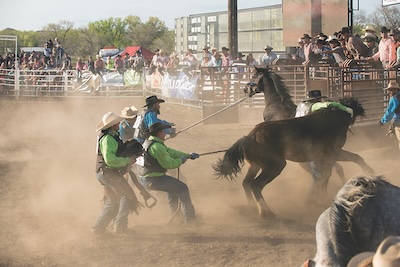
Located at the confluence of the Yellowstone and Tongue rivers, Miles City was founded in 1877 and named after Col. Nelson Miles, the commander of nearby Fort Keogh.
Today, nearly 150 years later, Miles City is one of the Big Sky state’s most important economic hubs for ranching and farming in the plains region of southeastern Montana. The Custer County Seat is home to nearly 8,500 residents and is located conveniently off Interstate 94 and Montana Highway 59. Outdoor recreation is also popular at Woodruff Park, Spotted Eagle Recreation Area, Strawberry Hills, Signal Butte, Mile Dam, the Tongue River and Pirogue Island State Park.
Don’t miss a tour of the city’s historic downtown district. Ranching and local cowboy history can be experienced firsthand at the Miles City Saddlery, which has been in business at 808 Main Street in Miles City since 1910. Walking downtown is sure to make you thirsty and hungry, so schedule time to visit the historic Montana Bar.
If you love museums, Miles City has two not to miss: The Range Rider Museum and WaterWorks Art Museum. If you love the Old West, schedule a few hours to tour The Range Rider, which has become the primary museum for exhibiting the history of southeastern Montana.
Every May, rodeo fans and promoters from around the world attend the World Famous Miles City Bucking Horse Sale to compete and see the next great generation of bucking horses. The annual Miles City Ranch Rodeo Parade is one of the most popular events in the southeastern Montana community. If you love county fairs, the Eastern Montana Fair is held every August. Events include 4H and animal exhibits, demolition derby, carnival, concerts and a PRCA rodeo.
So what are you waiting for? Time to cowboy up and head to Miles City!
milescitychamber.com
Experience Cowboy Culture
Bandera, TX: The self-proclaimed “Cowboy Capital of the World” in Texas Hill Country is the perfect place to immerse yourself in everything cowboy. The Bandera Pro Rodeo is held every Labor Day weekend.
Casper, WY: Rodeo is king in Wyoming, and Casper is annually home to the College National Finals Rodeo, Central Wyoming Fair & Rodeo and the Tribute to the American Cowboy Rodeo.
Cave Creek, AZ: World headquarters for True West magazine, the city is famous for its Western art, entertainment and restaurant district. Cave Creek Rodeo Days are held every March.
Cheyenne, WY: The state’s capital city is home to “The Daddy of ’em All,” Cheyenne Frontier Days. The 127th annual rodeo extravaganza will be held July 19-28 in 2024. Don’t miss a visit to the Cowgirls of the West Museum.
Elko, NV: In the heart of Buckaroo Country in Nevada’s Great Basin, Elko is home to the world-famous National Cowboy Poetry Gathering hosted by the Western Folklife Center.
Fort Pierre, SD: The Casey Tibbs South Dakota Rodeo Museum in the multipurpose center has a museum dedicated to nine-time world champion Tibbs and South Dakota rodeo. The Annual Casey Tibbs Match of Champions is held in the Casey Tibbs Arena every June.
Ruidoso, NM: Ruidoso Downs Race Track hosts the annual Renegade Roughstock Challenge, the All-American Cowboy Fest and the Mescalero Apache Ceremonial Dances and Rodeo.
Scottsbluff/Gering, NE: The historic twin cities on the North Platte River are home to Scotts Bluff National Monument, Legacy of the Plains Museum and Oregon Trail Days, which will hold its 103rd annual celebration in July.
Sheridan, WY: Every July, the Sheridan WYO Rodeo is a weeklong celebration of the cowboy way of life. Downtown, visitors should not miss King’s Saddlery, the Don King Museum, the Sheridan Inn and the historic Mint Bar.
Where History is Happening Now
Bozeman, MT: Home to Montana State University, the town also boasts a historic dining and entertainment district that is legendary, as are its local museums, including the Museum of the Rockies and the Gallatin History Museum.
Buffalo, WY: Stay in the historic Occidental Hotel and enjoy walking, dining, shopping and visiting the Jim Gatchell Memorial Museum in the downtown district. Longmire Days is held every July.
Coffeyville, KS: The Condon Bank Building, home to the area’s chamber of commerce, is the centerpiece of historic downtown Coffeyville. Walking tours are a great way to learn about the Dalton Gang’s infamous failed bank robbery.
Grapevine, TX: Take a step back from the hustle and bustle of Dallas and Fort Worth and spend some quality time in Grapevine’s historic district and take a ride on the Grapevine Vintage Railroad.
Laramie, WY: Laramie is home to the University of Wyoming and American Heritage Center. Don’t miss a tour of the Wyoming Territorial Prison State Historic Site.
Pendleton, OR: The town is world famous for the Pendleton Round-Up, and visitors will also enjoy touring the Pendleton Woolen Mills and Hamley’s & Co. saddle shop and steakhouse.
Reno, NV: Nevada’s second-largest city is a gateway to the natural wonders of the Sierra Nevada and one of the state’s centers of culture and art museums.
Santa Fe, NM: An internationally acclaimed destination for history and art lovers, Santa Fe, established in 1607, is a UNESCO-designated City of Craft and Folk Art.
Trinidad, CO: If you love history, book a long weekend in downtown Trinidad and enjoy visiting the local history museum, the A.R. Mitchell Museum and the historic district.
Williams, AZ: “The Gateway to the Grand Canyon” lives up to its moniker with a fun-filled historic downtown that honors the town’s railroad and Route 66 history. Book well in advance your round-trip ride to the South Rim on the ever-popular Grand Canyon Railway.
Where History Lives
Amarillo, TX: Pull on your hat and boots and get Western in this Texas Panhandle city famous for the American Quarter Horse Hall of Fame & Museum and the Big Texan restaurant.
Andrews, TX: Founded in 1908, the West Texas town’s rich history of cattle, cotton and oil can be discovered at the Legacy Park Museum.
Bartlesville, OK: Don’t miss a tour of the Woolaroc Museum when visiting this historic, northeastern Oklahoma town.
Bodie, CA: Visitors to the state historic park will discover the real West in the 170 buildings that remain preserved in one of California’s most notorious mining camps.
Clifton, AZ: Located on scenic U.S. Highway 191, the Greenlee County copper town is a gateway to exploring the historic communities and natural wonders of southeastern Arizona and southwestern New Mexico.
De Smet, SD: Known as “The Little Town on the Prairie,” the South Dakota town is home to the Laura Ingalls Wilder Memorial Society. The famous author’s parents settled the family in the area in 1879.
Douglas, WY: Discover the rich history of the Oregon Trail community at the city’s Wyoming Pioneer Memorial Museum Oregon.
Durango, CO: Book a room at the historic Strater Hotel, take a ride into history on the Durango and Silverton Railroad and discover the wonder of the beautiful San Juan Mountains.
Grass Valley, CA: Stay downtown in the Holbrooke Hotel founded in 1851 and take a tour of the Empire Mine State Historic Park in this town located in the Sierra Nevada foothills.
Jerome, AZ: The mountainside mining town is one of the state’s top destinations for Old West history and art lovers. Stay overnight in a haunted hotel, walk, shop and dine in the historic district and enjoy a tour of Jerome State Historic Park.
Kingman, AZ: Get your kicks in the historic Route 66 and Santa Fe Railway town located at the crossroads of Interstate 40 and U.S. 93. Don’t miss a tour of the Mohave Museum of History and Arts.
Muskogee, OK: If you love Western museums and hometown hospitality, book a long weekend in the town made internationally famous by Merle Haggard’s classic song “Okie from Muskogee.”
Ogallala, NE: At this crossroads of the Oregon Trail, the Pony Express Trail and the Western Trail, take time to visit Boot Hill and the always popular Old West Front Street.
Placerville, CA: The El Dorado County gold rush town on the California Trail was originally known as Hangtown. Visitors should not miss exploring the historic downtown.
Rawlins, WY: Make the historic Union Pacific Railroad town your headquarters for discovering the natural wonders and historic sites
of Carbon County.
St. Joseph, MO: Stay in the historic district and tour the town’s world-class Pony Express Museum and Patee House Museum and Jesse James Home.
Santa Clarita/Newhall, CA: Santa Clarita and Newhall were originally famous for cattle, cowboys and citrus. Today, Melody Ranch Motion Picture Studio keeps the West alive there on its 22-acre back lot.
Sidney, NE: Don’t miss the historic downtown district here, in what was originally a Union Pacific railroad town in western Nebraska.
Taos, NM: The historic New Mexico community is home to the Kit Carson House & Museum and the Taos Art Museum at Fechin House.
Virginia City, NV: The Comstock Lode town is a virtual Victorian-era heritage center, with historic sites, museums and buildings.
Wallace, ID: Here, in the richest silver district in American history, start your walking tour of the Wallace Historic District at the Wallace District Mining Museum.

